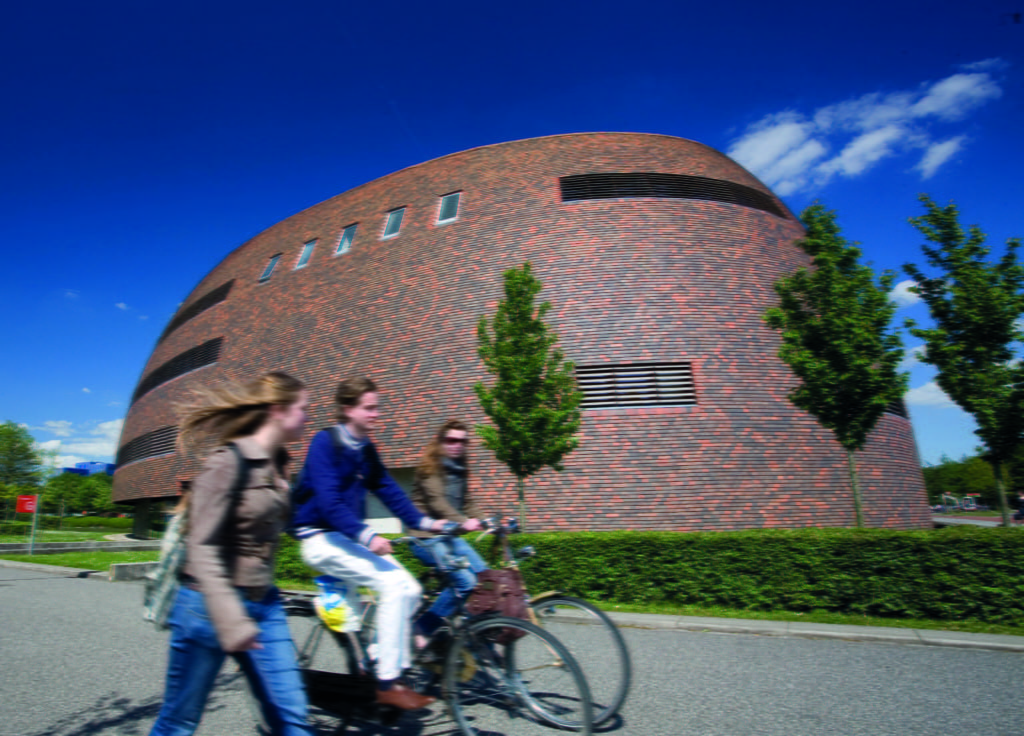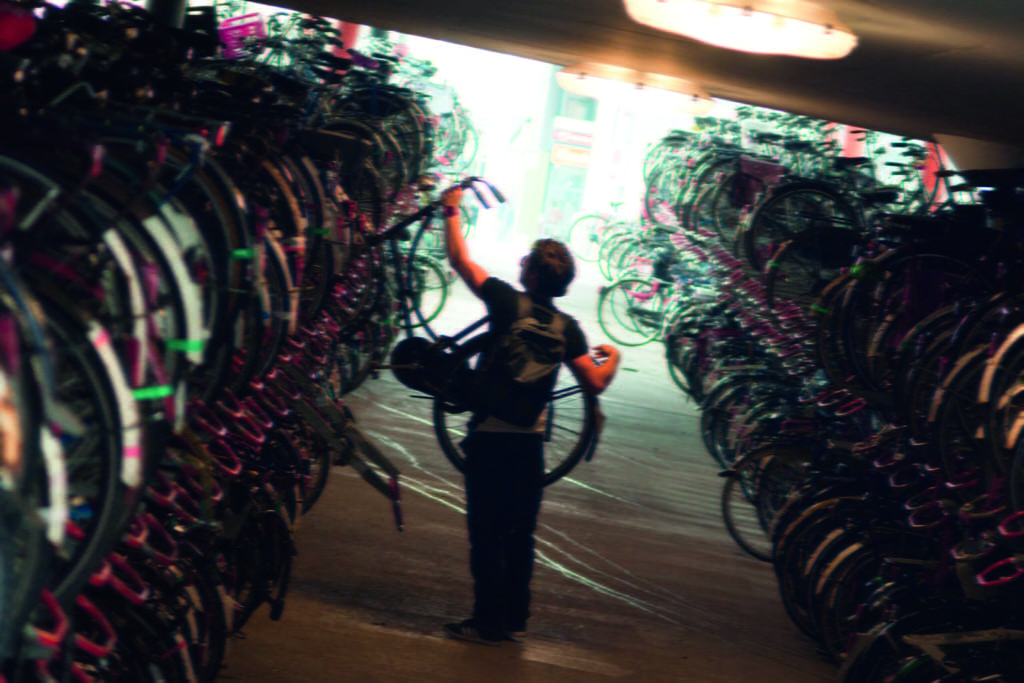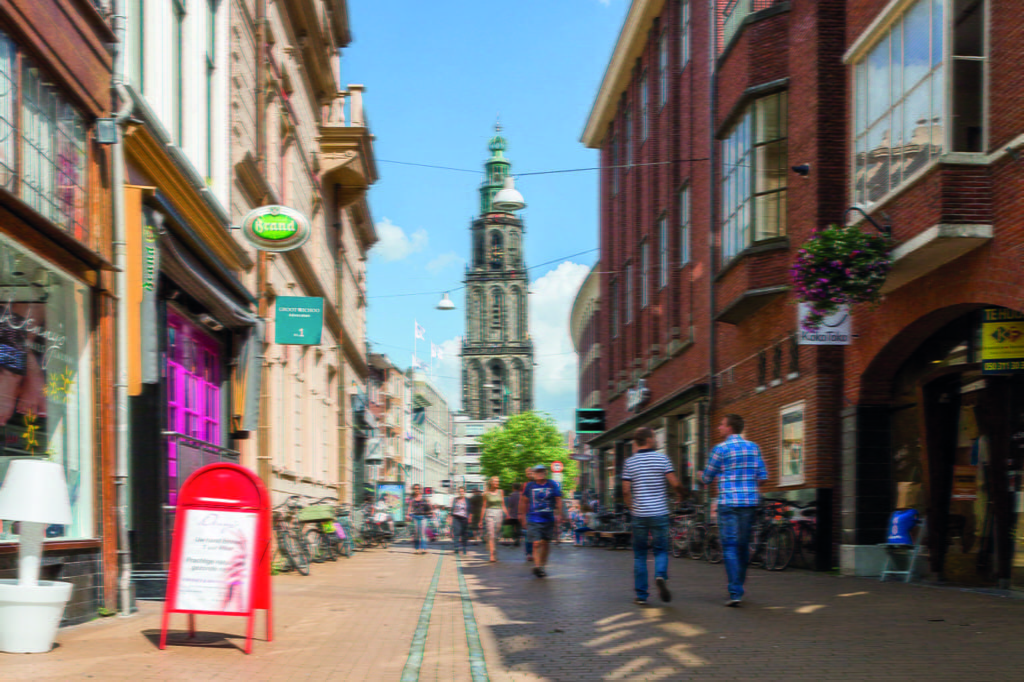The next Groningen
Francesco Ripa talks to Groningen’s Deputy Mayor, Philip Broeksma, about how the past is informing the future
Abrilliant mix of medieval buildings and breath-taking modern architecture. A fort-shaped wall around the city centre, conceived to underline the city’s commercial strength and protect it from attacks. A university dating from the 17th century that started as a centre for religious education and now attracts students from all over the world. And bicycles, of course. A lot of bicycles.
It’s Groningen, a city of roughly 200,000 inhabitants in the Northern Netherlands. Founded around 950 AD, the city with a turbulent past is betting heavily on sustainability and innovation to secure itself a bright future. This year, Groningen is hosting the sixth edition of the European Conference on Sustainable Urban Mobility Plans, a yearly conference supported by the European Commission.
For the occasion, Thinking Cities sat down with Mr Philip Broeksma, Deputy Mayor for Transport and Mobility at the City of Groningen, to discuss the city’s current plans and ambitions in terms of mobility.
A few years ago, Groningen started a process of strategic thinking on how to manage the city’s expansion in a sustainable way. A document called “The Next City” sets out Groningen’s vision for 2030.

'Groningen has always been a compact city and the Next Groningen will remain compact in the future, too. We are planning to build the new homes inside the city, mainly redeveloping former industrial areas'
Thinking Cities (TC): Deputy Mayor Broeksma, what does the Next Groningen look like?
Deputy Mayor Broeksma (PB): ‘The Next City Groningen’ addresses the five challenges the city faces: facilitating growth, with 20,000 new homes needed and 15,000 new jobs; accelerating the energy transition to become CO2-neutral; and staying an inclusive city with opportunities for all people. The central theme is quality of life. This is also a theme in the new municipal coalition agreement, “Healthy, green and happy Groningen”.
Groningen has always been a compact city and the Next Groningen will remain compact in the future, too. We are planning to build the new homes inside the city, mainly redeveloping former industrial areas. This will stimulate walking and cycling and prevent unnecessary car trips. The countryside will stay green and open, providing a great way for recreation and sustainable agriculture. The city has also taken great steps to become CO2-neutral by 2035, for example by providing renewable energy (heat and electricity) instead of natural gas to homes and companies.
TC: What role does sustainable urban mobility play in Groningen’s 2030 strategy?
PB: Sustainability is one of the key elements of Groningen’s strategy ‘The Next City’. To facilitate growth and stay a compact city, a sustainable and emission-free urban transport system is essential. We’re achieving this by following the hierarchy of modal transport: walking and cycling come first, followed by stimulating and facilitating public transport.
On the bottom are motorised vehicles such as cars and trucks. The results of this policy and approach is that in Groningen more than 60 percent of the inner-city movements are done by bicycle. Therefore, Groningen already has in base a fairly sustainable system.
TC: What is Groningen doing to comply with EU climate standards in terms of curbing CO2 emissions and reducing traffic?
PB: Our ambitious goal is to have a CO2-neutral and emission-free traffic system in our city not later than 2035. That is why we stimulate walking, cycling and public transport. Almost all buses will be powered by green electricity or green hydrogen from December 2019 onwards, reducing their CO2 output by a vast 90%. From 2023 all the school taxis and most of the regular taxis will be emissions-free. Most of our own vehicles (cars, vans, garbage trucks, etc.) will be emissions-free by 2025. We are creating more public space in the city, for example by expanding the car-free zone (which is already quite large) and reducing the number of parking lots and increasing the amount of parking lots for shared vehicles. Everyone with an electric car can opt for a free public charging point near their home. To create more space and a healthy environment in the city centre, the city also plans to enforce zero-emission city logistics by 2025, as a step up towards a complete zero-emission inner city by 2030.
TC: Groningen is home to a vibrant academic and innovation community. How does the city benefit from the cooperation with knowledge institutions and innovative start-ups in the mobility sector?
PB: In late 2018, the province of Groningen, the municipality of Groningen and the University of Groningen, the Hanze University of Applied Sciences and Noorderpoort signed a letter of intent to work towards the establishment of the Mobility Innovation Center (MIC). In this centre, unique to the Netherlands, these parties and business life will collaborate in the field of smart, sustainable and innovative mobility. The opening of the centre is expected in the middle of 2019.

The 6th Conference on Sustainable Urban Mobility Planse
TC: Groningen is now widely known as a great city for cycling, but it has not always been like that. A crucial shift towards cycling as a means of transport happened in the 1970s, when car access to most of the city centre was restricted. How did that happen?
PB: The implementation of the Traffic Circulation Plan (TCP) in Groningen was done more than 40 years ago. In the 1960s and 1970s the number and use of cars grew dramatically, also in Groningen. To accommodate this growth, Groningen made plans for breakthroughs and the demolition of houses and even whole housing areas. However, things changed with the 1972 elections. The new left-wing city council made an alternative plan, the Traffic Circulation Plan, or TCP. The main goal of the plan was to decrease the car traffic in the city, especially in the city centre, and to stimulate the use of bicycles and buses.
One of the most important conditions for the implementation of the plan was the realisation of two bypass roads: one existing bypass road circumventing the inner city, the Diepenring, was needed for the accessibility of carparks, and a new bypass road was needed for through-traffic.
The second condition was the development and building of new car parks around rather than within the city centre, with the aim to reduce the number of cars.
The four sectors were chosen regarding the lay-out of the city centre. The Vismarkt and the Grote Markt are the heart of that city centre and the heart of the four sectors. Many streets were turned into oneway streets, making little circuits. After the Traffic Circulation Plan, cars still could go to the city centre, but couldn’t go through it anymore. Of course, these boundaries don’t exist for cyclists.”
FYI
Philip Broeksma is Deputy Mayor for Traffic and Transportation at the City of Groningen.
Francesco Ripa is Communication and Project Officer at Polis.
